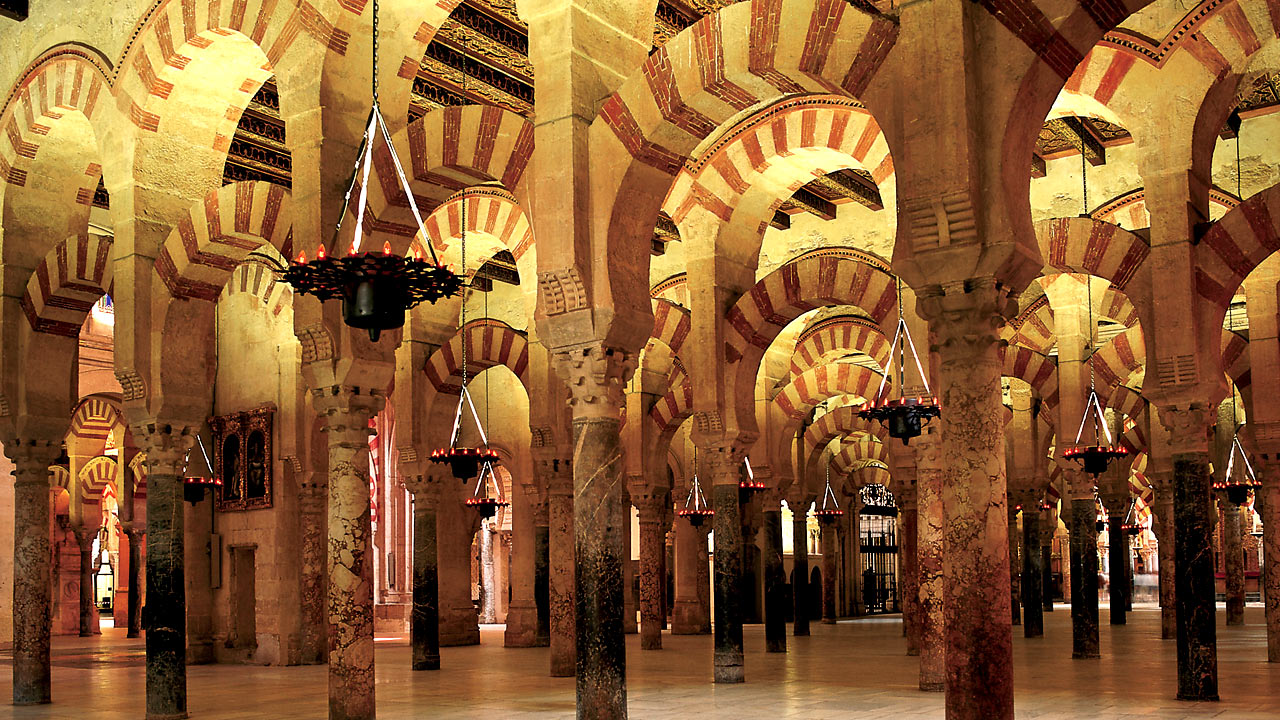In 2013, Alejandro García Sanjuán published his La conquista islámica de la Península Ibérica y la tergiversación del pasado: Del catastrofismo al negacionismo (GARCÍA SANJUÁN, 2013) with the aim of debunking two myths related with the Islamic conquest of the Iberian Peninsula: catastrophe and negationism. As Kenneth Baxter Wolf asserts in the review of the book (WOLF, 2014), much of the volume is dedicated to a careful and commendable assessment of the sources upon which any understanding of the Islamic conquest of the Iberian Peninsula must be based. But the driving force behind this investigation of the evidence is an impassioned call to arms against the “tergiversación” of the past, a “distortion” that the author associates with two modern myths surrounding the conquest of 711. The first myth is the idea that the Muslim presence in the peninsula was a fundamentally alien, even illegitimate, one, the result of a “catastrophic” twist of fate that placed a large part of what was “properly” Christian Spain under Muslim rule. The second myth contends that the Muslim conquest never really happened; that the changes traditionally associated with 711 were in fact part of a long-term transformation of southern Spain that involved the Arabs and Islam only as secondary agents. The problem with both interpretations, as García Sanjuán observes, is that they depend less on their fidelity to actual historical data than on their consonance with self-serving collective memories, and so they end up distorting our understanding of what actually happened in 711 and beyond.
The first of García Sanjuán’s two tergiversaciones, the myth of the “conquest as catastrophy”, is by far the more deeply rooted, fuelled as it was by 19th and early 20th century handwringing over the sense that Spain had not kept up with its European neighbours as it entered the modern world. This catastrofista myth had the advantage of being grounded in a medieval one, which was forged by the earliest Christian chroniclers faced with the unanticipated challenge of describing the displacement of the Catholic regime by a Muslim one. This early medieval “discourse of the vanquished” proved amazingly durable, not only providing a convenient ideological framework for the Castilian monarchy in its medieval struggle against the Muslims of al-Andalus and North Africa, but, with minor alterations, informing the nationalist españolista ideology that came to dominate 19th century Spanish historical discourse and ultimately to inspire the National Catholicism of Francisco Franco (1892-1975) and his era. Its central premise was the exclusive and absolute identification of Catholic and Spanish, which meant that al-Andalus, the antithesis of Christian Spain, could never have been anything but an interloper, a fundamentally illegitimate peninsular presence.
Nevertheless, this did not impede the Franco regime from using the myth of Al-Andalus to establish good relations with Arab countries (while not recognising the state of Israel), or to legitimise its presence in North Africa. Eric Calderwood, with his Colonial al-Andalus: Spain and the Making of Modern Moroccan Culture (CALDERWOOD, 2018; ANDERSON, 2019), shows that the narrative of interfaith tolerance among Muslims, Christians, and Jews was born out of a far more recent and historiographical obscure past: the Spanish colonization of northern Morocco in the 19th and 20th centuries. The book charts the evolution of what Calderwood calls this “Andalus-centric narrative” from its origins among Spanish proponents of colonization in the Spanish-Moroccan War (1859–60), to its apogee during the Spanish Civil War (1936–39), and ultimately to its adoption by Moroccan nationalist activists in the 1940s and 1950s, or to Franco’s assertion that al-Andalus could rival Mecca as a site of Muslim pilgrimage, translating colonial discourse into an Arabic literary idiom and exemplifying the unexpected ties between the Moroccan elite and Spanish fascism. The texts Calderwood analyses vividly illustrate how this idea of al-Andalus developed between Muslims and Christians, North Africans and Europeans, and past and present.
Calderwood identifies the Spanish-Moroccan War of 1859–60 as the moment when al-Andalus emerged as a powerful image for both Spaniards and Moroccans, and in the 1920s and 1930s the Spanish writer Blas Infante (1885-1936) articulated a vision of Andalusian nationalism (andalucismo) based on the conflation, in time, space, and culture, of medieval al-Andalus, the modern region of Andalusia, and Morocco. Infante’s andalucismo, a “cosmopolitan imperialism”, drawing on idealized notions of tolerance and racial mixing in al-Andalus, served as a critique of Catalan nationalism and Spain’s connection with the rest of Europe. This idea was taken up by an ally of Franco, Rodolfo Gil Benumeya (1901-1975), who argued that Andalucia – and thus Spain and Morocco – was “neither Orient nor Occident”, but rather a combination of both (BENUMEYA GRIMAU, 1996 [1930]).
A famous traveller to al-Andalus was the Indian Muslim poet and philosopher Muhammad Iqbal (1877-1938). In January 1933, he visited Spain, a visit which inspired him several poems, later incorporated into a major composition, Bal-I Jibril (Gabriel’s Wing). The trip also provided him an opportunity to experience Spain’s Islamic heritage, having the opportunity to see the presence of Muslims in history. Among the various monuments of Islamic Spain, the most intense yearning of his soul was to experience Granada and the Grand Mosque of Cordoba. For Iqbal, just being there was overwhelmingly therapeutic, for there, before his own eyes, was about the most vivid reminders of the Golden Age of Islam, an era that, according to him, provided the roots of Europe’s Enlightenment. At the great mosque of Cordoba, he wrote Masjid-e-Qurtaba (The Mosque of Cordoba) (available at http://www.allamaiqbal.com/poetry.php?bookbup=24&orderno=317&lang_code=en&lang=2&conType=en) and offered his prayers, although this ritual had been forbidden by the Government of Spain. The centrality of the mosque of Cordoba to Islamic Spain is compared to the centrality of the Kaaba to Islam generally, while the positive impact of Islam on Spain and Europe are extolled (SCHIMMEL, 1963; NOORANI, 1999).
The arguments about al-Andalus appealed to both sides in the Spanish Civil War (1936-1939) but, as Calderwood shows, had particular power in Franco’s fascist regime. Moroccan elites took up the Spanish Andalus-centric narrative during the colonial period and, focusing on a travel narrative – Ahmad al-Rahuni’s (1871-1953) Journey to Mecca (1941) -, Calderwood shows how Franco’s regime sponsored hajj (pilgrimage) voyages for favoured Muslim elites like al-Rahuni, much like other European imperial powers (KANE, 2015; SLIGHT, 2015; RAHIMI and ESHAGHI, 2019; CAN, 2020; LOW, 2020), but it also incorporated visits to Andalusi heritage sites like the Mosque-Cathedral of Cordoba. Al-Rahuni’s text uses Qur’anic language to lend credence to Franco’s assertion that al-Andalus could rival Mecca as a site of Muslim pilgrimage.
Calderwood also pays attention to Shakib Arslan (1869-1946), a prominent advocate for pan-Islamic resistance to European colonialism whose interpretation of al-Andalus as a “lost paradise” deeply influenced Moroccan nationalists from the 1930s to the 1950s. During a 1930 visit to Morocco and Spain, Arslan encountered and mentored many young activists and scholars from both Spanish and French Morocco, including Ahmad Balafrij (1908-1990), M’hammad Binnuna, Muhammad Dawud (1901-1984), and Muhammad al-Fasi (1910-1974) (ADAL, 2006). These men actively reinterpreted Arslan’s notion of al-Andalus both to insert their specific activism into the broader anticolonial struggle across the Muslim world and to assert a direct, genealogical connection between medieval Andalusis and contemporary Moroccans, who deployed the same language Spanish fascists used to justify colonialism when making their claims of a distinct Moroccan national identity.
REFERENCES:
ADAL, Raja. Constructing transnational Islam: the East-West network of Shakib Arslan. In Intellectuals in the Modern Islamic World: Transmission, transformation, communication. Edited by Stephane A. Dudoignon, Komatsu Hisao, and Kosugi Yasushi. London and New York: Routledge, 2006, p. 176-210.
ANDERSON, Samuel. Review of Eric Calderwood’s Colonial al-Andalus: Spain and the Making of Modern Moroccan Culture. Available at http://www.h-net.org/reviews/showrev.php?id=53657
BENUMEYA GRIMAU, Rodolfo Gil. Ni oriente, ni occidente: el universo visto desde el Albayzín. Granada: Editorial Universidad de Granada, 1996 [1930].
CALDERWOOD, Eric. Colonial al-Andalus: Spain and the Making of Modern Moroccan Culture. Cambridge, MA: Belknap Press of Harvard University Press, 2018.
CAN, Lale. Spiritual Subjects: Central Asian Pilgrims and the Ottoman Hajj at the End of Empire. Stanford: Stanford University Press, 2020.
GARCÍA SANJUÁN, Alejandro. La conquista islámica de la Península Ibérica y la tergiversación del pasado: Del catastrofismo al negacionismo. Madrid: Marcial Pons, 2013.
KANE, Eileen. Russian Hajj: Empire and the Pilgrimage to Mecca. Ithaca, NY: Cornell University Press, 2015.
LOW, Michael Christopher. Imperial Mecca: Ottoman Arabia and the Indian Ocean Hajj. New York: Columbia University Press, 2020.
NOORANI, Yaseen. The Lost Garden of Al-Andalus: Islamic Spain and the Poetic Inversion of Colonialism. International Journal of Middle East Studies, vol. 31, n. 2 (May 1999), p. 237-254.
RAHIMI, Babak, and ESHAGHI, Peyman (eds.). Muslim Pilgrimage in the Modern World. Chapel Hill: University of North Carolina Press, 2019.
SCHIMMEL, Annemarie. Gabriel’s Wing: A Study into the religious ideas of Sir Muhammad Iqbal. Leiden: E. J. Brill, 1963.
SLIGHT, John. The British Empire and the Hajj: 1865-1956. Cambridge, MA: Harvard University Press, 2015.
WOLF, Kenneth Baxter. Negating Negationism. Pomona Faculty Publications and Research. 394 (2014). Available at http://scholarship.claremont.edu/pomona_fac_pub/394
Créditos da imagem: Reprodução: Images of Mosque Cathedral of Cordoba.
[vc_row][vc_column][vc_text_separator title=”SOBRE O AUTOR” color=”juicy_pink”][vc_column_text][authorbox authorid = “348”][/authorbox]
Carimo Mohomed
Related posts
Notícias
História da Historiografia
História da Historiografia: International
Journal of Theory and History of Historiography
ISSN: 1983-9928
Qualis Periódiocos:
A1 História / A2 Filosofia
Acesse a edição atual da revista



